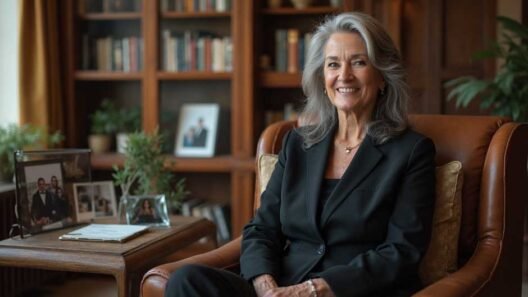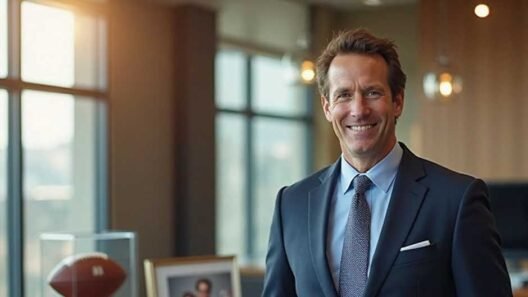Lance Armstrong’s net worth sits at $50 million today. This number barely scratches the surface of his complex financial journey. His fortune peaked at $125 million during his cycling glory days.
The champion cyclist ranked among the world’s top-earning athletes. He pulled in over $20 million each year from endorsements and competition wins. But his financial world turned upside down after the doping scandal shook the sports community. The scandal’s price tag reached about $75 million in lost endorsements, legal settlements, and lawyer fees. His 2024 net worth took another big hit from legal battles, including a potential $100 million lawsuit from the U.S. Federal government if his case had gone to trial.
Armstrong bounced back from these massive setbacks. His smart early bet on Uber turned out to be a game-changer. The investment grew to roughly $30 million at its peak (about $20 million after fees). This crucial move, combined with other business ventures, helped Armstrong keep much of his wealth even after losing his cycling legacy.
The Rise of a Champion: Early Life and Career
Lance Armstrong’s athletic talents emerged during his early years in Plano, Texas, where he was born in 1971. Swimming caught his interest at the time he was 10 years old. By age 13, he expanded his athletic activities to include running and cycling. His exceptional endurance showed up well before he reached his teenage years.
From triathlons to cycling: Lance’s early athletic experience
The young athlete’s multi-sport success started with a smooth transition from swimming to triathlons. His remarkable achievement came at age 16 when he became a professional triathlete. He dominated the sport and won the national sprint-course triathlon championship in both 1989 and 1990.
The U.S. Cycling Federation noticed his outstanding cycling abilities and recruited him before he finished high school. Armstrong chose to focus only on cycling in part because triathlon wasn’t included in the Olympic program during the 1980s. His victory at the U.S. Amateur Championships in 1990 set him on a clear path toward professional cycling.
Breakthrough with the Motorola Cycling Team
Armstrong’s professional career started in 1992 with the Motorola Cycling Team. His first professional race at the Clásica de San Sebastián in Spain ended with a last-place finish. The setback didn’t last long. He bounced back within two weeks to grab second place at a World Cup race in Zurich, Switzerland.
The 1992 Barcelona Olympics saw him finish 14th in the road race—a decent showing that didn’t reflect his full capabilities. All the same, Armstrong’s determination would soon elevate his career to new heights.
First major wins and global recognition
Armstrong made his mark on the world stage in 1993. He became the youngest rider to win the World Road Race Championship in Norway at age 21. That year brought him the prestigious “Triple Crown” with victories in the Thrift Drug Classic, the Kmart West Virginia Classic, and the CoreStates Race (U.S. Professional Championship).
His first Tour de France stage win came in 1993 on the route from Châlons-sur-Marne to Verdun. By 1995, he had won both the Clásica de San Sebastián and the Tour DuPont. His fierce riding style and incredible endurance established him as one of cycling’s brightest stars.
Armstrong’s success continued in 1996 as he became the first American to win La Flèche Wallonne and claimed another Tour DuPont victory. His career seemed unstoppable until October 1996. At age 25, he received news that would pause his meteoric rise: advanced testicular cancer.
The Turning Point: Cancer Battle and Comeback
October 2, 1996 changed Armstrong’s promising career forever. The 25-year-old cyclist received devastating news – stage three testicular cancer that had spread to his brain, lungs, and abdomen. Doctors gave him a 20 to 50% chance of survival to maintain his hope, but privately believed his chances were “almost none”.
Diagnosis and treatment of testicular cancer
Doctors immediately removed the cancerous testicle through radical orchiectomy. Armstrong started aggressive chemotherapy just five days later. He needed brain surgery to remove two cancerous lesions. His chemotherapy treatment ended on December 13, 1996.
The doctors chose VIP regimen (vinblastine, etoposide, ifosfamide, cisplatin) over the standard BEP (bleomycin, etoposide, cisplatin) treatment for his remaining cycles. This decision helped save his cycling career by avoiding lung toxicity.
Return to cycling and Tour de France dominance
Armstrong received the all-clear from cancer in February 1997. His return to professional cycling in 1998 proved challenging as he struggled at elite levels. The 1998 Paris-Nice race almost made him quit the sport.
His determination paid off. Armstrong achieved what seemed impossible – winning his first Tour de France on July 25, 1999, just three years after his diagnosis. Standing at the finish line, he said, “I hope it sends out a fantastic message to all survivors around the world. We can return to what we were before—and even better”.
This victory sparked an incredible run as Armstrong won seven Tour de France titles in a row (1999-2005). His achievements made him one of cycling’s most dominant figures.
Public image as a symbol of resilience
Armstrong created the Lance Armstrong Foundation (later renamed Livestrong) in January 1997. The foundation’s yellow wristbands became worldwide symbols of hope for cancer patients.
His path from hospital bed to cycling champion struck a chord with people everywhere. Armstrong’s comeback exceeded sports, turning him into a powerful symbol of hope. The foundation launched programs like “Livestrong at the YMCA” that offered free 12-week exercise programs to cancer survivors, helping people beyond cycling.
Cancer shaped Armstrong’s public image more than his athletic achievements, giving hope to countless patients facing similar battles.
The Fall from Grace: Doping Scandal and Financial Fallout
Suspicions of doping cast a shadow over Armstrong’s championship years that ended up leading to his dramatic downfall.
Timeline of doping allegations and investigations
The U.S. federal prosecutors started looking more closely at Armstrong’s conduct in 2010 as they pursued doping allegations. The U.S. Anti-Doping Agency (USADA) charged him with systematic use of illicit performance-enhancing drugs and blood transfusions in June 2012. USADA released extensive evidence on October 10, 2012. The evidence included sworn testimony from 11 former teammates, emails, financial documents, and lab test results. USADA called it “the most sophisticated, professionalized and successful doping program that sport has ever seen”. The Union Cycliste Internationale (UCI) took away Armstrong’s seven Tour de France titles on October 22, 2012, and banned him from competitive cycling for life. Armstrong stood firm in his denials for years but finally admitted to doping during a televised interview with Oprah Winfrey on January 17, 2013.
Loss of endorsements and stripped titles
The financial effects hit hard and fast. Armstrong lost almost all his sponsors within 24 hours after USADA released its report. Nike had backed him since 1996 but ended its contract on October 17, 2012, citing “insurmountable evidence”. Anheuser-Busch, Trek Bicycle Corporation, RadioShack, Giro, FRS, Honey Stinger, and 24 Hour Fitness also cut ties. UCI’s president declared, “Lance Armstrong has no place in cycling, and he deserves to be forgotten”. Tour de France organizers decided not to give his seven titles to other cyclists, which effectively erased his victories from the record books.
Estimated financial losses and legal settlements
Armstrong’s net worth took a devastating hit. He lost about USD 75 million in sponsorship deals in just one day. His lost endorsements cost him more than USD 150 million in future earnings. Legal battles drained his finances even more. He paid USD 10 million to SCA Promotions in 2015 to return previous bonus money. He settled a USD 100 million whistleblower lawsuit with the U.S. government for USD 5 million in 2018. He also paid USD 1.65 million to cover Floyd Landis’s legal costs, who started the whistleblower case. People also asked him to return his prize money, estimated at USD 3.85 million.
The Financial Rebuild: Investments, Assets, and Net Worth in 2025
Lance Armstrong’s road to financial recovery started with a small investment that turned into his financial salvation after devastating losses.
The Uber investment that saved his fortune
Armstrong put $100,000 into Chris Sacca’s venture capital fund, Lowercase Capital in 2009. Uber’s value stood at just $3.7 million back then. This smart move brought him around $20 million and became his financial lifeline. “It’s saved our family,” Armstrong shared with CNBC. The windfall helped him cover the $111 million he spent on legal fees and settlements after admitting to doping.
Real estate portfolio and high-value properties
His property holdings remain strong even after his downfall. He owns properties in Austin, Texas, and Aspen, Colorado. He bought a $12 million luxury villa in Austin’s suburbs in 2020. He used to own a $9.18 million Aspen mansion, which he later put up for sale at $14.5 million. Smart real estate moves have helped him keep his wealth after his cycling career ended.
Business ventures and speaking engagements
Armstrong’s business world extends beyond investments. He launched Next Ventures, a venture capital firm that focuses on health and wellness startups. His two podcasts—”THEMOVE” and “The Forward”—bring in money through ads and sponsorships. He also earns $50,000 to $100,000 for each speaking appearance, which gives him steady income.
Charity work and Livestrong legacy
The Livestrong Foundation remains Armstrong’s lasting legacy, though he stepped down as chairman in 2012. Yellow wristbands and other initiatives have helped raise over $500 million. Livestrong put $50 million into the University of Texas at Austin’s Dell Medical School in 2014. The foundation keeps supporting cancer patients and survivors.
Lance Armstrong net worth 2024 vs 2025
Armstrong’s net worth sits at about $50 million in 2024-2025. This shows substantial recovery given his situation. His wealth dropped from a peak of $125 million during his cycling days. Through smart investments, business ventures, and careful money management, he managed to keep substantial wealth despite losing about $75 million in endorsements after the doping scandal.
Conclusion
Lance Armstrong’s financial story mirrors his cycling career’s dramatic ups and downs. His net worth fell from $125 million to about $50 million today. This shows how a scandal can affect someone’s wealth, yet also proves their ability to bounce back. The doping scandal changed everything and cost him $75 million through lost endorsements, legal fights, and titles that were taken away.
Armstrong showed his business smarts even after these setbacks. He made a simple $100,000 investment in Uber that turned into $20 million – this became his financial lifeline. Smart real estate deals and business moves helped him keep much of his wealth when others thought he’d lose everything.
The former cycling champion built his fortune back up in different ways. He now makes money from his podcasts, speaking events, and investment company. His property investments have also become valuable assets. Armstrong’s story goes beyond a sports scandal – it shows how smart money moves can save your wealth even after a major public fall.
Armstrong’s story is bigger than just cycling and money. The Livestrong Foundation works separately from him now but still helps cancer patients around the world. This charitable work might be the most lasting part of Armstrong’s complex story. It reminds us that even people who make mistakes can make positive changes during their toughest times.













